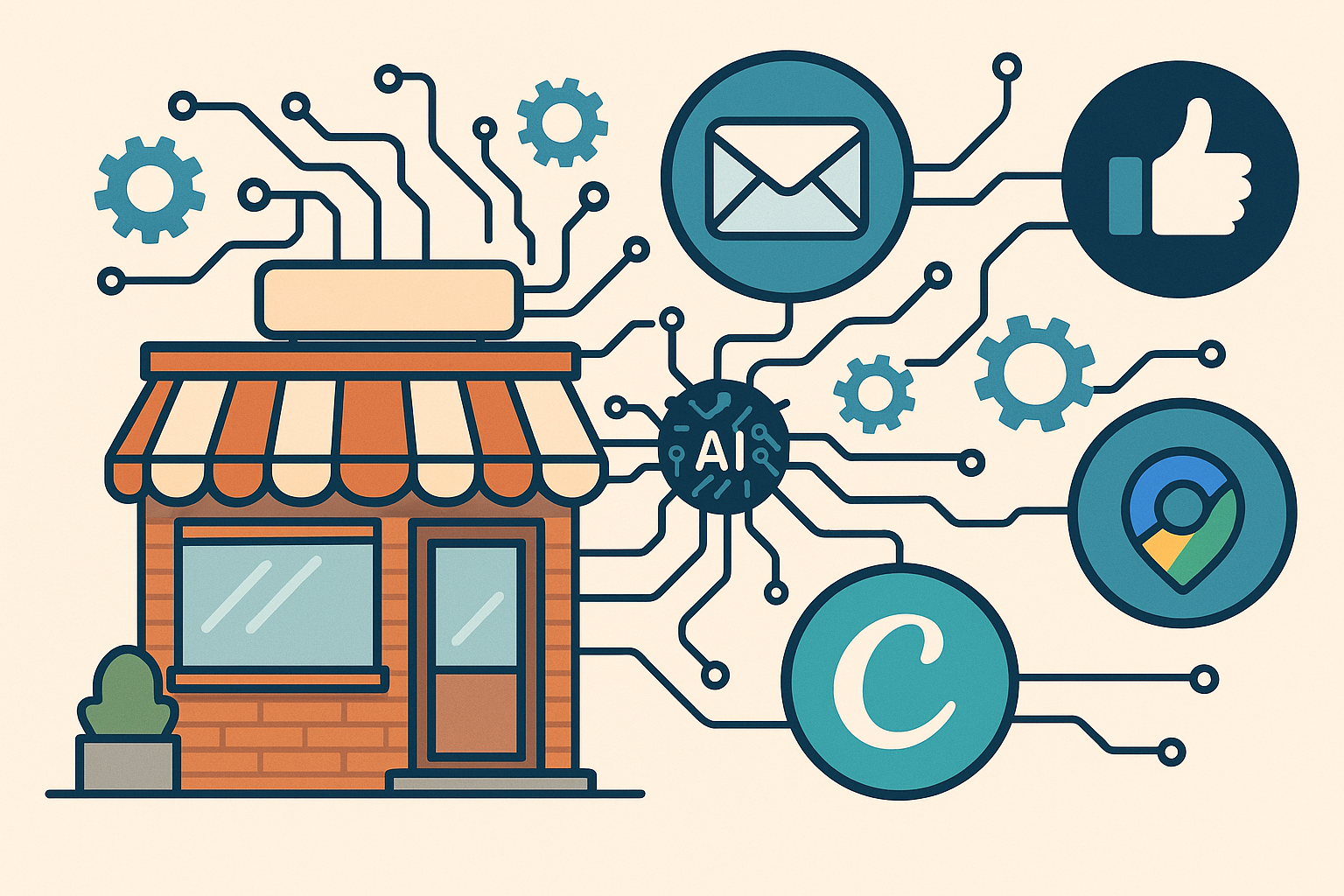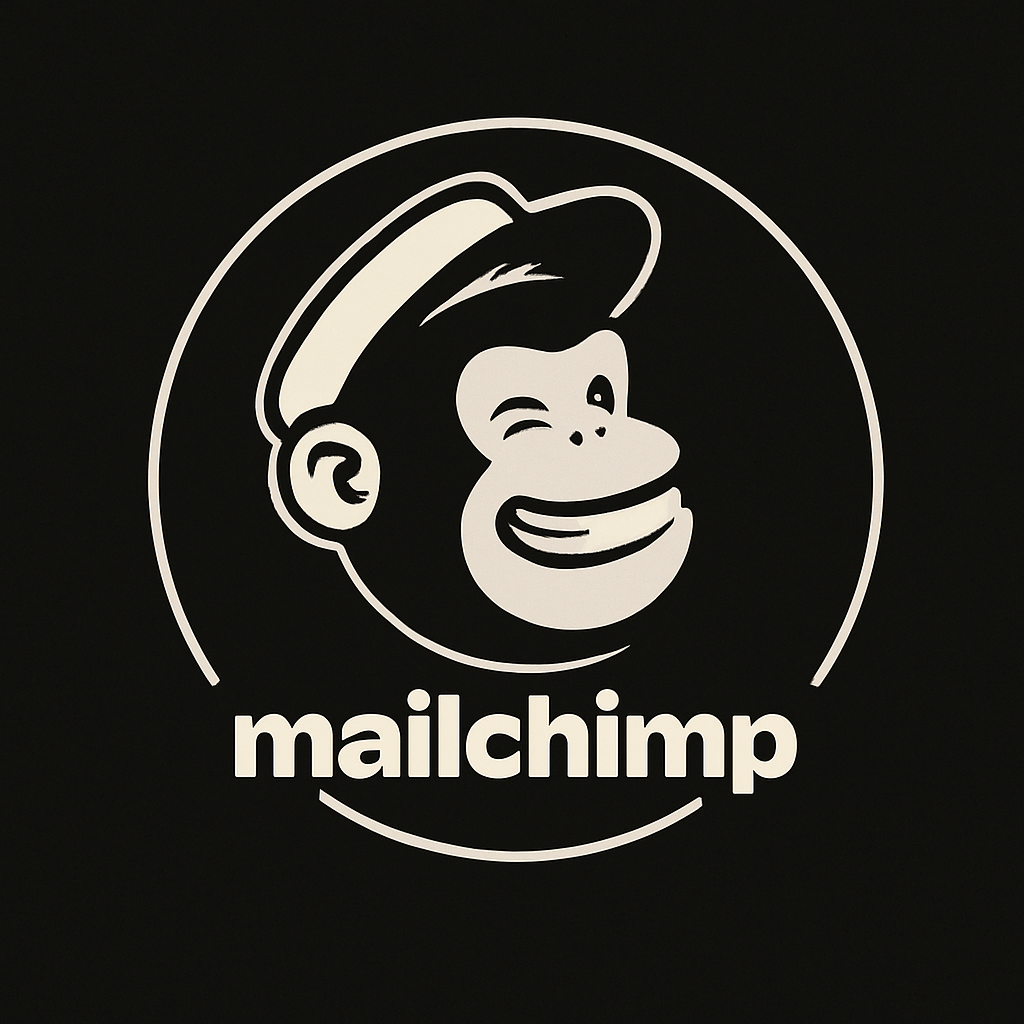First Personalized Experience for your Customers Using Agentic AI
Discover how Agentic AI empowers small businesses in Denver to deliver personalized customer experiences at scale—building stronger relationships and driving loyalty through smart automation.
Welcome back to the “Scaling Smarter” series on benindenver.com! I’m Benjamin Blair, a marketing expert with over 20 years of experience, and I’m here to help Denver small businesses thrive in 2025. After setting up your marketing profiles in our last post, let’s explore how to personalize customer experiences with agentic AI. Rest assured—you can absolutely manage this yourself with the right tools and steps. The most complicated structures imaginable all begin with a simple first step. Let’s make your business more engaging!
Why Personalization Matters
Tailored interactions create a uniquely personal relationship between you and your customers, and agentic AI can analyze your data to deliver emails or website content specific to them, boosting loyalty without high costs. For Denver businesses, whether a retailer, consultant, or service provider, this is an achievable way to stand out, and you’re fully capable of making it happen even without a coding and tech skills.
Tools to Get Started
We’ll use two accessible platforms I’ve worked with recently, one of which we just built a profile on in the last post, the other is probably the most common and user friendly website hosting:
Mailchimp: The free tier offers AI-driven segmenting to target specific customer groups.
Squarespace: A user-friendly site builder with customization options to add personalized content, starting with a free trial or affordable plan.
Both are cost-effective, and you can set them up with confidence using the steps below.
Step-by-Step Guide
1. Set Up Mailchimp Segmentation
Mailchimp’s AI can segment your list to personalize outreach, perfect for your Denver customers. Here’s how to start:
Log into your Mailchimp account from our last post.
Go to “Audience” and select your “Denver Customers” list.
Click “Manage Contacts” > “Segments” > “Create Segment.”
Pick a condition (e.g., “City contains Denver” or “Purchased in last 30 days”) you can do this easily!
Name your segment (e.g., “Active Denver Buyers”) and save it.
2. Craft a Personalized Email
Create an email tailored to your segment with Mailchimp’s help:
Click “Create Campaign” > “Email.”
Let Mailchimp’s AI suggest a subject line (e.g., “Exclusive Offer for You, Denver!”), you’re in control here!
Use “Hi [FirstName],” and add a personalized offer (e.g., “10% off your next purchase”).
Send a test email to yourself to check it, you’ve got this!
3. Add Personalization to Squarespace
Enhance your website with personalized content using Squarespace’s features:
Log into your Squarespace account (or start a free trial at squarespace.com).
Go to “Pages” and edit the page where you want personalization (e.g., homepage).
Use the “Content Blocks” feature to add a text block, you can handle this in minutes!
Insert a personalized message (e.g., “Welcome back, [Name]!”) using Squarespace’s custom code option or a third-party integration (e.g., a free plugin like “Squarespace Personalization”).
Save and preview your site to see it work, you’re fully capable of making this happen!
Sample Email Script
Here’s a template to get you started:
Subject: Exclusive Offer for You, Denver!
Hi [FirstName],
Thanks for being part of our [Business name] Denver community! Enjoy 10% off your next purchase this month. Check it out at [YourStoreLink].
Best,
[YourName]
Your Denver BusinessFeel free to adjust this for your needs, you can do it!
Download Detailed Guide
For more detailed instructions, download our free guides:
These resources provide step-by-step support, so you can set up with ease.
What’s Next?
You’ve made great progress personalizing your marketing! Our next post will connect these tools to agentic AI for automation. Stay tuned, and share your experience with me on LinkedIn.
Let’s keep building your Denver business together!
Building Your Own Automated Marketing System with Agentic AI for Denver Small Businesses in 2025
Discover how Denver small businesses can leverage agentic AI to automate their marketing efforts. This guide walks you through setting up essential platforms like Mailchimp, Buffer, Canva, and Google My Business, laying the groundwork for a smarter, more efficient marketing system in 2025.
Welcome to the first post in our series on agentic AI for Denver small businesses! I’m Benjamin Blair, a 20+ year marketing veteran who’s passionate about helping local businesses thrive. Today, we’ll set up profiles on key platforms to prepare for automated marketing with agentic AI. Don’t worry—you can absolutely handle these steps yourself, even if you’re new to tech. Let’s get started!
Why Start Here?
Setting up profiles on the right platforms is the foundation for automating your marketing. These accounts will later connect to agentic AI tools that handle tasks like scheduling and personalization, saving you time while growing your Denver business.
The Platforms You’ll Need
We’ll use four free tools that are perfect for small businesses and ready for AI integration:
Mailchimp: For email marketing with AI-driven features.
Buffer: To schedule social media posts across platforms.
Canva: For creating visuals with AI assistance.
Google My Business (GMB): To boost your local presence in Denver.
You can set up all these profiles in under an hour—let’s walk through the steps together.
Step-by-Step Setup Guide
1. Mailchimp (Email Marketing)
Mailchimp’s free plan lets you manage contacts and send emails with AI help (e.g., optimizing send times). Here’s how to start:
Go to mailchimp.com and sign up with your email (e.g., yourbusiness@gmail.com).
Create a list called “Denver Customers” and add a few contacts (e.g., from your phone).
You can set this up in 10 minutes—I promise you’ve got this!
Buffer is a super handy social media management tool designed to help individuals, creators, and small businesses streamline their online presence. With Buffer, you can schedule posts across various platforms like Instagram, Facebook, LinkedIn, X (formerly Twitter), Pinterest, Threads, and even YouTube.
2. Buffer (Social Media Scheduling)
Buffer lets you schedule posts for up to 3 social accounts (e.g., X, LinkedIn, Instagram). It also has AI to suggest post times.
Visit buffer.com and sign up for the free plan.
Connect your social accounts (e.g., your X handle @yourbusiness).
Schedule your first post (e.g., “Excited to grow my Denver business!”).
You’re capable of this—it’s quick and straightforward!
3. Canva (Content Creation)
Canva’s free plan includes AI tools like Magic Design to create stunning graphics for your posts.
Head to canva.com and create a free account.
Search for “Social Media Post” and use the AI to generate a design (e.g., “Denver Sale!”).
Download your design—you can do this easily in minutes!
4. Google My Business (Local SEO)
Google My Business helps Denver customers find you, with AI insights to improve your profile.
Go to business.google.com and claim your business.
Add your Denver address, hours, and phone number.
You’ve got this—it’s a simple way to boost local visibility!
Download Detailed Guides
Need more help? I’ve created detailed guides for each platform, with step-by-step instructions to ensure you succeed. Download them below:
These guides walk you through every click, so you can set up with confidence.
What’s Next?
Now that your profiles are ready, our next post will show you how to connect these platforms to agentic AI for automation—think automated emails, scheduled posts, and more! Stay tuned for the rest of the series, and let me know how this setup goes for you in the comments or on LinkedIn.
Let’s keep growing your Denver business together!
Your Website Is Not a Brochure—It’s a Growth Engine
Your Website Is Not a Brochure—It’s a Growth Engine
If your website isn’t generating leads, it’s not a website—it’s a liability.
Topics:
What separates high-performing sites from static ones
The role of speed, UX, and conversion paths
Real-world changes that drive traffic and conversions
CTA: Tie into the Accelerator Plan (hands-on support)
If you are like most businesses, you treat your website like a digital flyer—something to point people towards, not a platform that actually move the needle. Don’t take it personally, for most of my marketing career, that is how websites were built. Informational, branded, and static. Pretty but passive. Tons of work upfront, but then kind of just fading into another marketing asset rather than an engine to drive growth.
In todays market, a passive website is actually a liability.
Websites should generate revenue, not just impressions.
As I have waxed on about in nauseum, the modern customer journey is fragmented and non-linear. People aren’t just landing on your home or landing pages and just immediately filling out a contact form. They bounce between pages, look you up on social media, read every negative review they can find, check out your content, etc., all before most business owners even know they exist.
If your website isn’t designed with a strategy to guide and convert this anonymous visitors in to qualified leads, than it is failing at it most important function. Your website is not a brochure, it isn’t a text book, and it isn’t a welcome mat, it is the starting line of your sales engine.
What separates growth driven websites from static ones?
If we are honest with ourselves, the vast majority of websites look fine on the surface, but are bleeding opportunity underneath. Fixing this problem can seem like a bit of a daunting task, so I have put together the most common areas where things fall apart so you have somewhere to start diagnosing.
Slow load times and poor mobile optimization. Search engines and users penalize it. User bounce has massive impact on your site and it is a relatively simple fix.
Lack of clear conversion pathways. If you aren’t showing users the next step, they aren’t going to take it. Period, its that simple.
Generic messaging. This is becoming more and more of a problem as people have AI write their content instead of rolling of their sleeves and writing it themselves. Your website should sound and feel like you, not some corporate template or some AI generated jargon. People like people.
No data feedback loop. This is not the time to “set it and forget it.” If you aren’t testing, tracking, and reiterating, you are making assumptions rather than improvements.
The role of UX, Speed, and Conversion Strategy
The very best, high performance websites on the market aren’t just pretty, they are purposeful. Every element serves a function to support the primary objective of the site, conversion.
Here are some of the common aspects of the most effective websites that give them an edge over their competition:
Speed First- For starters, effective websites are fast…like under 2.5s load time or you are losing leads, prospects are bouncing, and you SEO is suffering. You site needs to feel instant.
Frictionless UX- The design should get out of the way of the message. Despite the incredible talent and creativity of our graphic designers, function and message should always be the focus. Clean navigation, mobile first wins every time.
Conversion Pathways on every page- More than just a call to action at the bottom of a landing page, the most effective sites guide the user on every single page. Soft asks, hard asks, and contextual prompts keep momentum towards conversion.
Designed with User Psychology in mind- The use of authority signals, scarcity cues, testimonials and social consent, as well as visuals that reduce uncertainty and built trust are all standard in any conversion focused website.
Real-world changes that drive actual Real Growth
Like most things in life, a small strategic shift in thinking and planning will lead to massive performance gains. I have seen conversion rates double after rewriting a single headline to better reflect a customer’s pain point. I have had websites reduce bounce rates by over 40% overnight by shaving a couple seconds off of load time. A couple of years ago at a Solar Engineering Firm whose lead generation I was managing, we tripled our lead volume while reducing our CPA all by just adding a simple downloadable checklist as a mid-funnel magnet.
The Bottom Line
Your website isn’t a billboard, it isn’t a brochure. It is the engine that fuels your growth. If it isn’t tuned to convert, it is costing you money every single day. The bright side? Most sites only need a few focused changes to go from flat to high performing.
Let’s make this work for you!
I don’t just build pretty websites. I build systems that scale.
I take a hands-on role in optimizing your site to drive traffic, capture leads, and convert attention into action.
Stop Guessing: Using AI to Sharpen Your Audience Targeting
Stop Guessing: Using AI to Sharpen Your Audience Targeting
You’re not “bad at ads”—you’re just aiming at the wrong people.
Topics:
AI tools for persona refinement (LLMs, behavioral modeling)
Lookalike vs. predictive audiences
Building adaptive targeting systems
CTA: Book a consult to map your actual customer journey
It’s not that you are bad at ads, it isn’t your creative team that is failing. No matter how good the ad is, if it is aimed at the wrong people it will be ineffective and inconsistent.
The real reason your ads aren’t working
It’s not your creative, it’s not your offer, it’s not your “call to action.” Most importantly, it probably isn’t your budget either. Chasing that solution gets really expensive, really fast!
The main reason your marketing isn’t converting and your cost of acquisition is so high…the wrong people are engaging with it.
You’re targeting the wrong people—or most likely, and even worse, you are relying on outdated personas built on assumption and targeted based on gut feelings.
The modern digital landscape does not reward guesswork. It rewards precision, and the most powerful tool for getting precise is AI.
From Static Personas to Dynamic Models
The traditional marketing personas we have all been using for decades are similar to cardboard cut outs of people. They are flat, rigid, and worst of all generic.
“Stacey S, 35, soccer mom, married, homeowner, shops online”
“Jeremy F, 28, tech savvy, gym membership, college graduate”
These types are targeting personas don’t work for consistent results. Real people are way more complex than a simple persona and a binary yes or no from a list of interest, and your targeting has to reflect that complexity.
With LLMs you can simulate real buyer behaviors, generate nuanced customer journeys that adjust in real time based on actions, and stress test your messaging from thousands of different directions in minutes. Combine that with behavioral modeling and first-party data, and you have a living, evolving understanding of your actual audience.
Lookalike Audiences VS Predictive Targeting
I have built some massive campaigns in my career and have seen a ton of success with lookalike audiences. They were really great…10 years ago.
The way lookalikes work is by cloning past customers that have converted via your marketing, the problems arise when you have any changes at all in your product, you value proposition, your funnel, or basically anything else. You can end up chasing shadows and burning budgets very quickly.
Predictive Targeting, or predictive audiences generated by artificial intelligence flip that script. Instead of mirroring the past, it gives us the ability to forecast who is most likely to convert based on real time intent signals, evolving engagement data, and in the moment psychographics.
The platforms we are all using like Facebook and Google are dabbling in this technology, but layering in your own tools, ie., SparkToro for intent or Clearbit for enrichment, you gain targeting that adapts with your market, not months behind it.
Building adaptive targeting systems
Good marketers don’t “set it and forget it,” they build systems that actually evolve and learn.
Using the right AI tools you can:
Ingest performance data and update audience segments automatically
Run message simulations to see how different groups are most likely to react
Cluster intent signals to personalize campaigns even before launch
Instead of a one size fits all campaign and generic targeting, you can create a living ecosystem where every customized audience member gets what they need to hear when they are most ready to hear it.
Are you ready to see what AI-Powered Targeting actually looks like?
If you are still guessing who your audience is, you are basically burning cash. Let’s map your actual customer journey, identify your targeting blind spots, and set you up with an adaptive system designed to evolve with your market.










